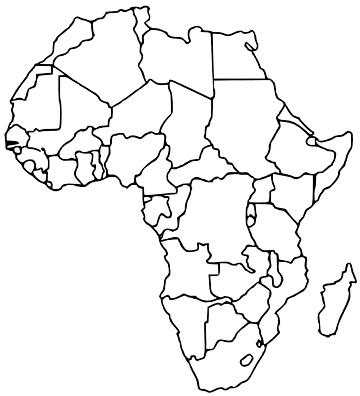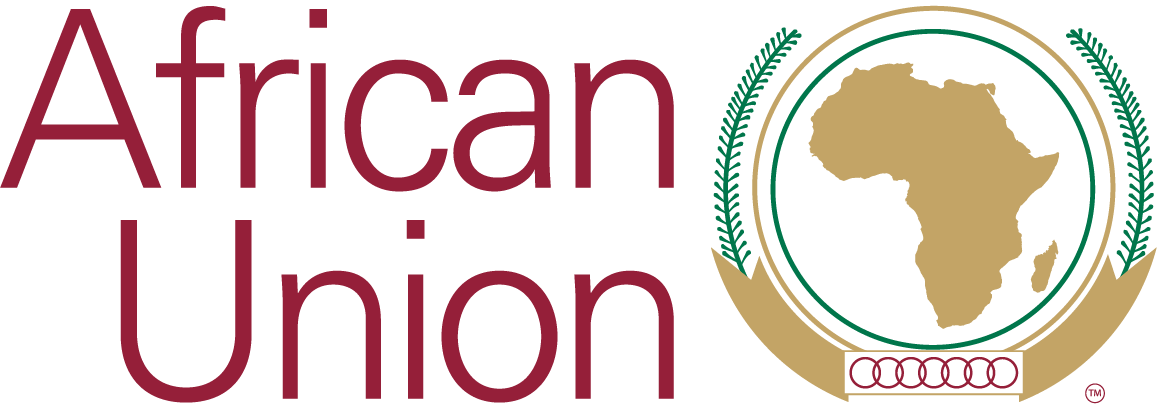North Africa Member States Section
North Africa, a region bridging Africa and the Middle East, is a cradle of ancient civilizations and diverse cultures. From the majestic pyramids of Egypt to the intricate architecture of Moroccan medinas, the region boasts a rich tapestry of history, language, art, and religion. The cultural mosaic of North Africa reflects a blend of indigenous Amazigh traditions, Arab influences, and African heritage—making it a vital pillar in Africa’s identity and global narrative.
- Algeria
- Egypt
- Libya
- Mauritania
- Morocco
- Sudan
- Tunisia
- Western Sahara
Algeria – Key Facts
Egypt – Key Facts
Libya – Key Facts
Mauritania – Key Facts
Morocco – Key Facts
Sudan – Key Facts
Tunisia – Key Facts
Western Sahara – Key Facts
This area shows summary and important facts based on the selected country.
Explore North Africa through data, news, trends, and opinions tailored to each country's role in Agenda 2063.
Explore North Africa through data, news, trends, and opinions tailored to each country's role in Agenda 2063.
- Algeria
- Egypt
- Libya
- Mauritania
- Morocco
- Sudan
- Tunisia
- Western Sahara
Algeria – Information
Algeria is the largest country in Africa, located in North Africa along the Mediterranean Sea. Its landscape includes the Sahara Desert, vast plateaus, and mountain ranges like the Tell Atlas and Hoggar Mountains.
The northern coast features fertile land ideal for agriculture, while the south is arid and sparsely populated. Algeria’s diverse geography contributes to varied climates and ecosystems across the country.
The official languages of Algeria are Arabic and Berber (Tamazight), with Berber gaining official status in recent years to reflect the country’s indigenous heritage.
French remains widely used in education, business, and government administration due to Algeria's colonial history, making the country multilingual in practice.
Algiers, the capital, is a historic and economic hub with a mix of Ottoman, French colonial, and modern architecture. It is known for its white buildings and vibrant coastal port.
Other major cities include Oran, a center for music and arts; Constantine, famous for its bridges and cliffs; and Annaba, an important industrial and trade city in the northeast.
Egypt – Information
Egypt is a transcontinental country linking northeast Africa with the Middle East via the Sinai Peninsula. The majority of Egypt's territory lies in the Sahara Desert, with the fertile Nile Valley and Delta being the most populated regions.
The country's geography is dominated by the Nile River, which flows northward through the desert to the Mediterranean Sea, supporting agriculture and civilization for thousands of years.
The official language of Egypt is Arabic, used in media, education, and government. The Egyptian dialect is widely spoken informally.
English and French are also used, especially in business and higher education. Ancient Egyptian and Coptic influence still appears in the culture and language.
Cairo, the capital, is Africa’s largest city and a hub for politics, culture, and education. Alexandria, located on the coast, is a historical trade center.
Luxor and Aswan in Upper Egypt are renowned for ancient temples and monuments, making them important cultural tourism sites.
Libya – Information
Libya is located in North Africa, bordered by the Mediterranean Sea to the north. It has a vast desert landscape with very limited arable land, as over 90% of the country is desert.
The Sahara in Libya features sand seas, rocky plateaus, and oases. Coastal areas support most of the population due to access to water and trade routes.
Arabic is the official language in Libya. The Libyan Arabic dialect is the most commonly spoken, with variations across regions.
Berber languages are also spoken in the western mountains, and Italian and English are sometimes used in commerce and education.
Tripoli, the capital, is Libya’s largest city and a key port on the Mediterranean. Benghazi is the second-largest city and has historical significance.
Sebha and Misrata are also notable urban centers in the desert and along the coast, supporting trade and industry.
Mauritania – Information
Mauritania lies in the western part of the Sahara Desert and is mostly flat with vast desert plains. It transitions from arid north to semi-arid Sahel in the south.
The Senegal River forms its southern border, supporting some agriculture. The rest of the country features sandy dunes and sparse vegetation.
Arabic is the official language of Mauritania, and Hassaniya Arabic is the widely spoken dialect. French is used in government and education.
Berber languages and Pulaar are also spoken among various ethnic communities, reflecting the country’s diverse cultural landscape.
Nouakchott is the capital and largest city of Mauritania, located on the Atlantic coast. It is the center of administration and trade.
Nouadhibou is the second-largest city and an important port and fishing hub. Inland towns like Atar also hold cultural significance.
Morocco – Information
Morocco is geographically diverse, with coastlines on both the Atlantic Ocean and the Mediterranean Sea. It has mountains, fertile plains, and part of the Sahara Desert.
The Atlas Mountains run across central Morocco, influencing the climate and agriculture. The Rif Mountains in the north provide a rugged coastal landscape.
Arabic and Amazigh (Berber) are Morocco’s official languages. Classical Arabic is used in formal contexts while Darija (Moroccan Arabic) is spoken daily.
French is extensively used in commerce, education, and government. Spanish is also spoken in northern regions due to colonial influence.
Rabat is the capital of Morocco, known for its diplomatic and administrative functions. Casablanca is the largest city and economic heart of the country.
Marrakesh, Fes, and Agadir are major cities rich in culture, tourism, and history, offering varied regional identities.
Sudan – Information
Sudan is located south of Egypt and is traversed by the Nile River and its tributaries. It has deserts in the north, savannas in the center, and wetlands in the south.
Sudan's terrain supports a range of ecological zones, but desertification and political instability affect land use and agriculture.
Arabic is the official language of Sudan, and Sudanese Arabic is commonly used in daily life and media.
English is also recognized and used in education, especially in the south. Various local languages reflect the country’s ethnic diversity.
Khartoum, the capital, lies at the confluence of the Blue and White Nile. It is the political and economic center of Sudan.
Omdurman and Port Sudan are major cities, with the latter serving as Sudan’s key port for international trade.
Tunisia – Information
Tunisia is the northernmost country in Africa with Mediterranean coastal plains and parts of the Sahara to the south. It has a moderate climate and varied terrain.
The country includes mountains in the northwest and the Chott el Jerid salt lake in the south. Tunisia’s geography allows for diverse agriculture and tourism.
Arabic is Tunisia's official language, and Tunisian Arabic (Derja) is spoken informally. French is also widely used in education and administration.
Berber languages are spoken in some southern and mountainous regions. Language use in Tunisia reflects its historical ties to both Arab and European cultures.
Tunis, the capital, is a cultural and economic hub near ancient Carthage. Sfax is an important port and industrial city.
Sousse and Kairouan are also notable cities for their Islamic heritage, coastal tourism, and educational institutions.
Western Sahara – Information
Western Sahara is a disputed territory bordered by Morocco, Mauritania, and Algeria. It consists of desert flatlands and dunes with very limited water resources.
Its arid climate and sparse infrastructure make large-scale habitation and agriculture difficult, and much of the population lives in refugee camps or urban centers under Moroccan control.
The main spoken languages in Western Sahara include Hassaniya Arabic and Spanish, the latter due to colonial history with Spain.
Berber languages are also used among Sahrawi populations. Language access varies based on administrative control and region.
El Aaiún (Laayoune) is the largest city and considered the capital by Moroccan authorities. It is the administrative and economic center.
Other towns include Dakhla, known for fishing and tourism. Many Sahrawis also live in refugee camps in Algeria’s Tindouf region.
Historical, cultural, and geographic insights.
- Algeria
- Egypt
- Libya
- Mauritania
- Morocco
- Sudan
- Tunisia
- Western Sahara
Algeria – Trending News
Recent oil policy reforms and public demonstrations are making headlines. Economic diversification efforts continue.
Read MoreEgypt – Trending News
Major infrastructure projects including new capital development are dominating national news.
Read MoreLibya – Trending News
Peace talks among rival factions gain momentum as international interest grows.
Read MoreMauritania – Trending News
Mining expansions and diplomatic engagement with ECOWAS are trending in national discussions.
Read MoreMorocco – Trending News
Smart city initiatives and renewable energy projects are key topics this week.
Read MoreSudan – Trending News
Ongoing political transition and humanitarian challenges are at the forefront of news cycles.
Read MoreTunisia – Trending News
Economic reforms and parliamentary debates over new laws have sparked national discourse.
Read MoreWestern Sahara – Trending News
Renewed attention on territorial status and UN dialogue continues to drive conversation.
Read MoreSubscribe to receive trending news updates for North Africa on Agenda 2063.
- Algeria
- Egypt
- Libya
- Mauritania
- Morocco
- Sudan
- Tunisia
- Western Sahara


Recent Agenda 2063 updates highlight a renewed push for youth empowerment through innovation hubs and digital literacy campaigns. Member States are collaborating with private tech partners to equip African youth with skills to drive the continent's transformation.
The African Union has ramped up efforts to implement key infrastructure projects under Agenda 2063, including the Trans-African Highway and high-speed rail initiatives. These developments are set to improve intra-Africa trade, mobility, and economic integration across the continent.
In line with the aspirations of Agenda 2063, several countries have committed to clean energy targets, launching solar and wind projects aimed at reducing carbon emissions. These efforts support Africa’s vision for sustainable development and climate resilience by 2063.






